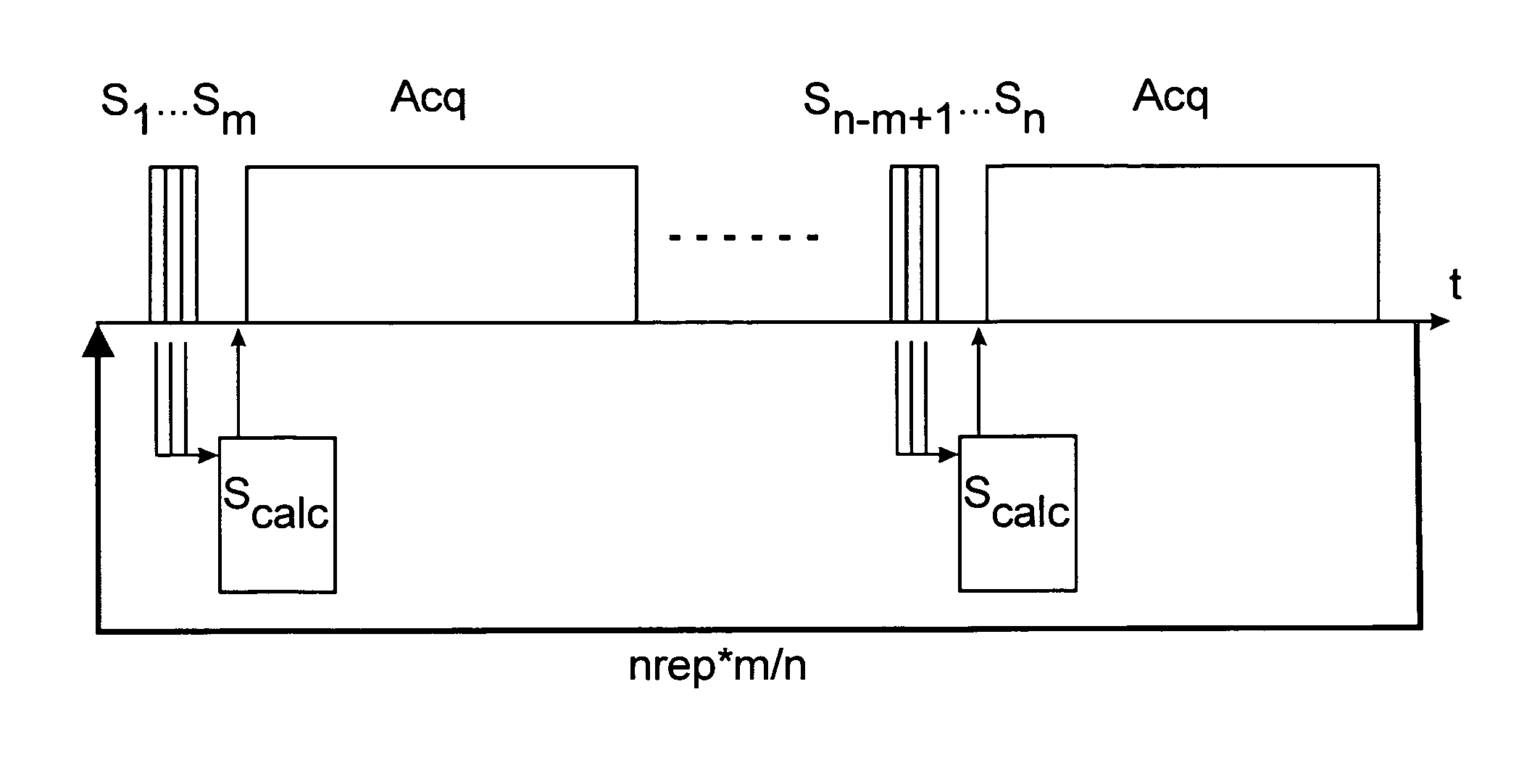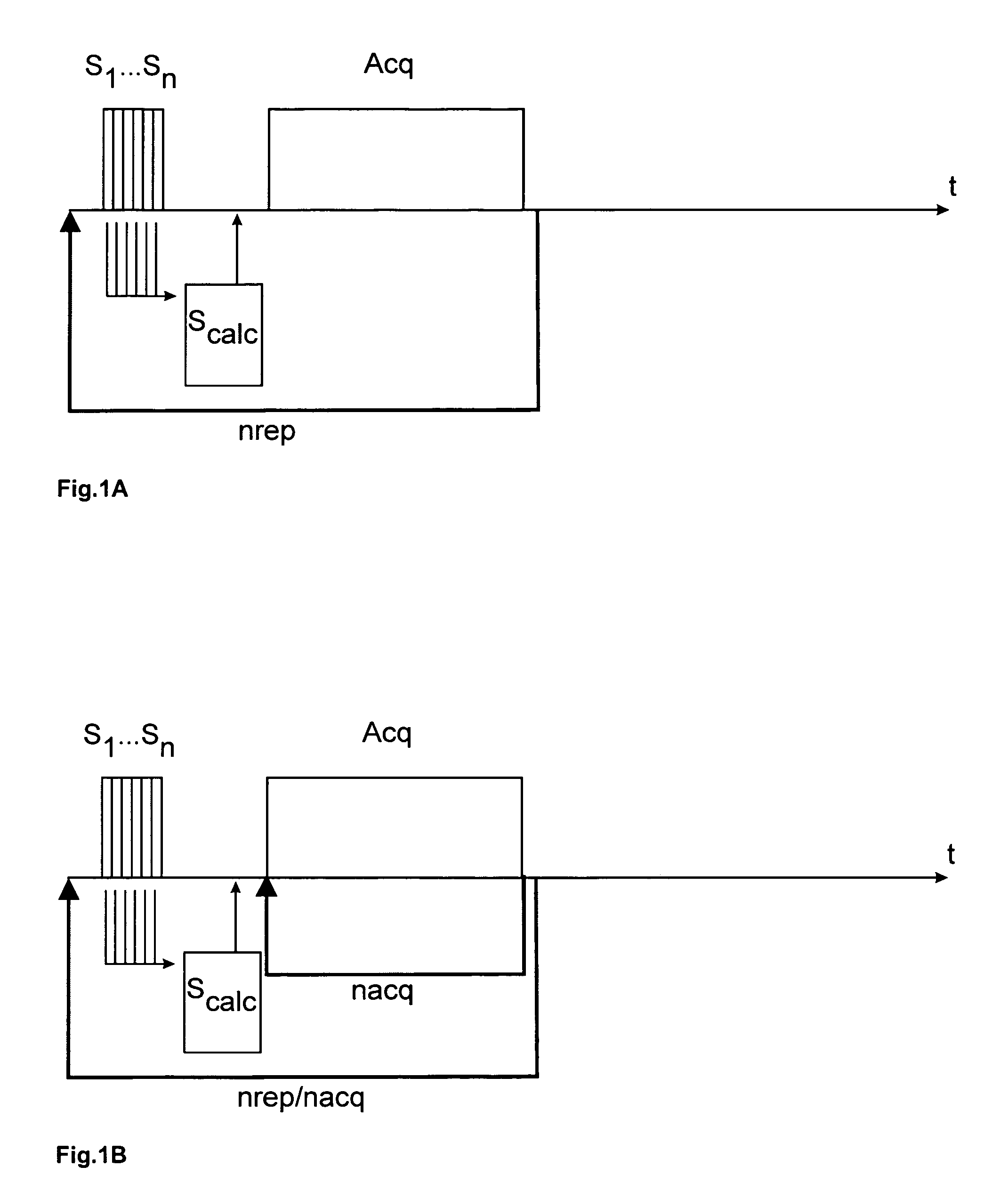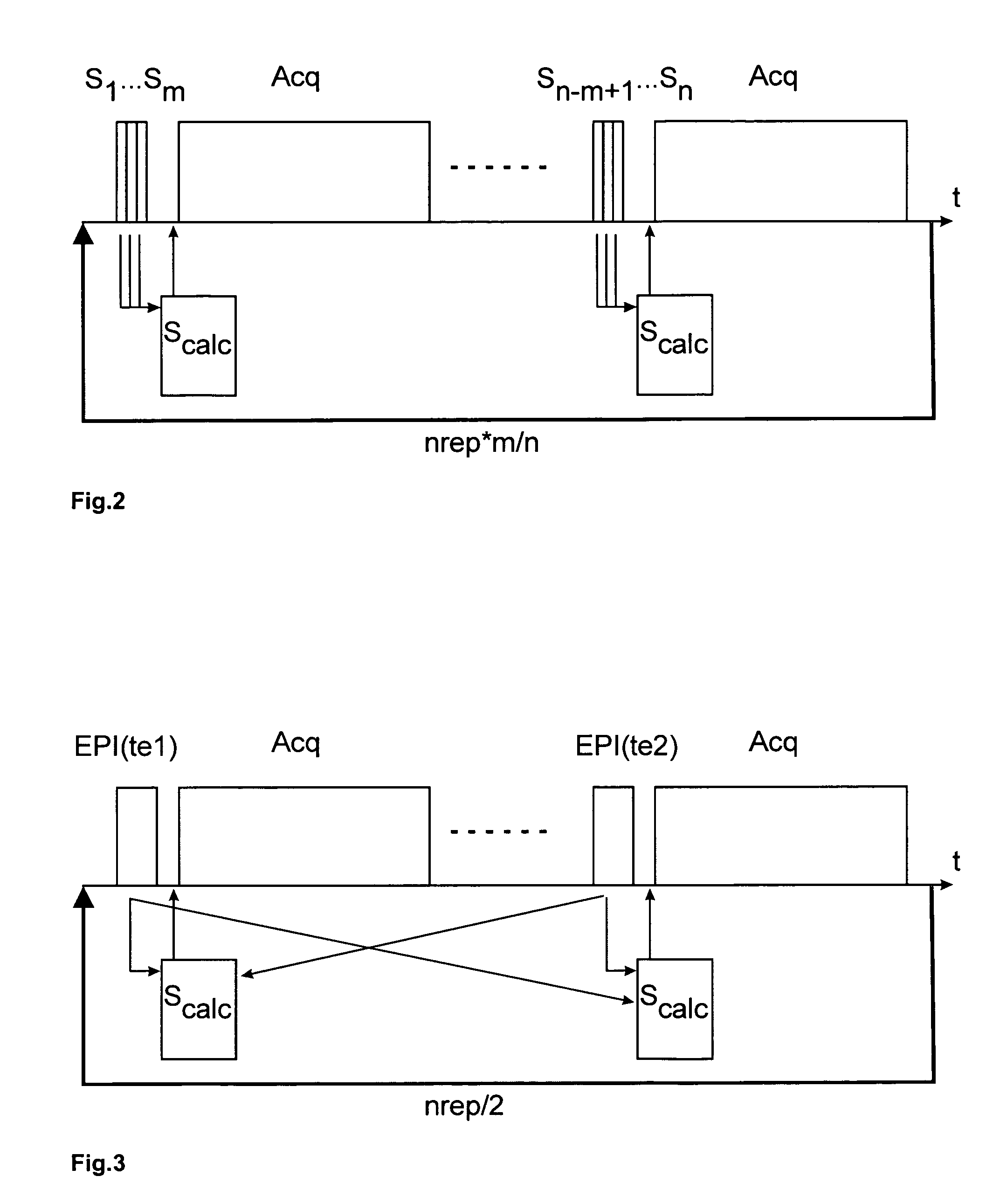Method for dynamic detection and change in the magnetic field distribution in magnetic resonance (NMR) measurements
a magnetic field and dynamic detection technology, applied in the field of magnetic resonance (nmr), can solve the problems that the methods which are usually used to measure the magnetic field distribution are not suitable for such dynamic (and ideal continuous) correction, and achieve the effect of preventing or minimizing the influence of signal
- Summary
- Abstract
- Description
- Claims
- Application Information
AI Technical Summary
Benefits of technology
Problems solved by technology
Method used
Image
Examples
Embodiment Construction
[0030]FIG. 1A shows a diagram of the method for dynamic adjustment of the magnetic field distribution with nrep times repeated data acquisition, wherein before each individual measurement Acq the magnetic field distribution is measured in n acquisition steps S1 . . . Sn of a shim sequence and the shim currents required for compensation of field inhomogeneities are calculated and applied in the subsequent calculation step Scalc.
[0031]The acquisition steps S1 . . . Sn of the additionally inserted periodic shim sequence may be based on navigator measurements according to the FASTMAP method. Towards this end, at least one measurement (for the previous application for a one-time static field measurement typically also several measurements) is carried out in each of the three main directions of the magnetic field. The number n of measuring steps is therefore typically n≧3.
[0032]In a modification of this approach, measurement and compensation of the magnetic field distribution is not perfo...
PUM
 Login to View More
Login to View More Abstract
Description
Claims
Application Information
 Login to View More
Login to View More - R&D
- Intellectual Property
- Life Sciences
- Materials
- Tech Scout
- Unparalleled Data Quality
- Higher Quality Content
- 60% Fewer Hallucinations
Browse by: Latest US Patents, China's latest patents, Technical Efficacy Thesaurus, Application Domain, Technology Topic, Popular Technical Reports.
© 2025 PatSnap. All rights reserved.Legal|Privacy policy|Modern Slavery Act Transparency Statement|Sitemap|About US| Contact US: help@patsnap.com



